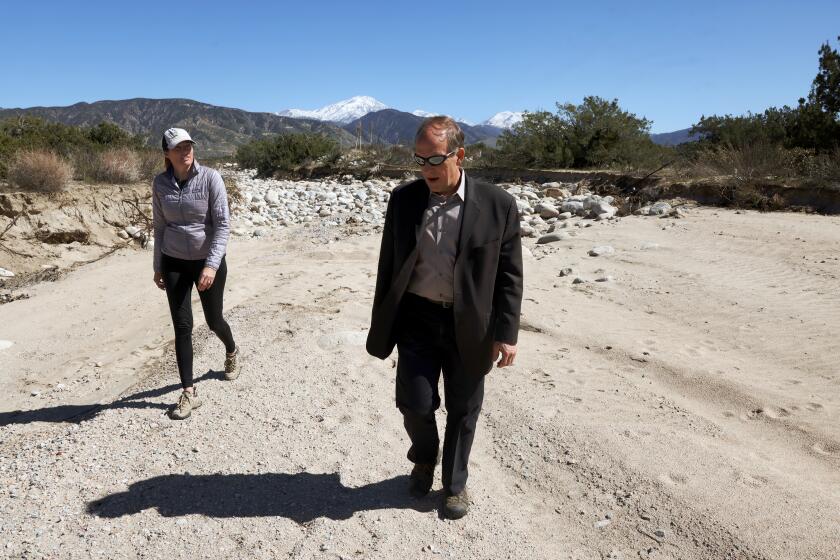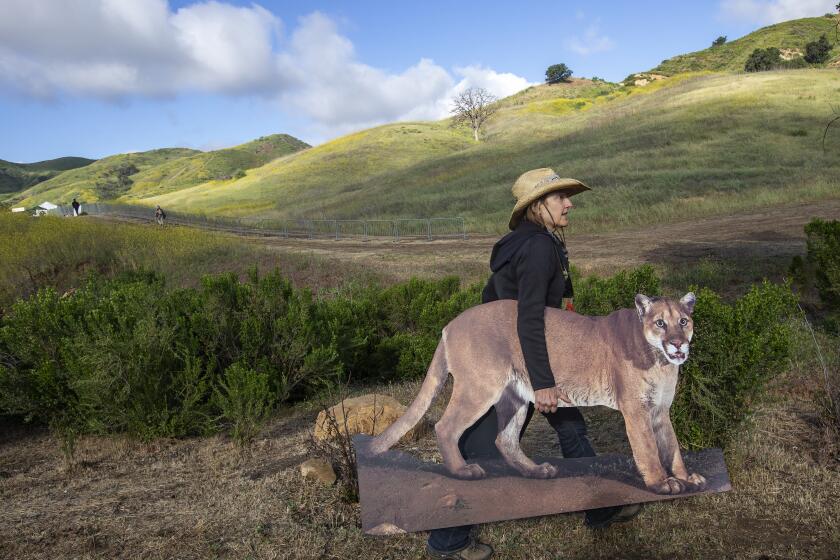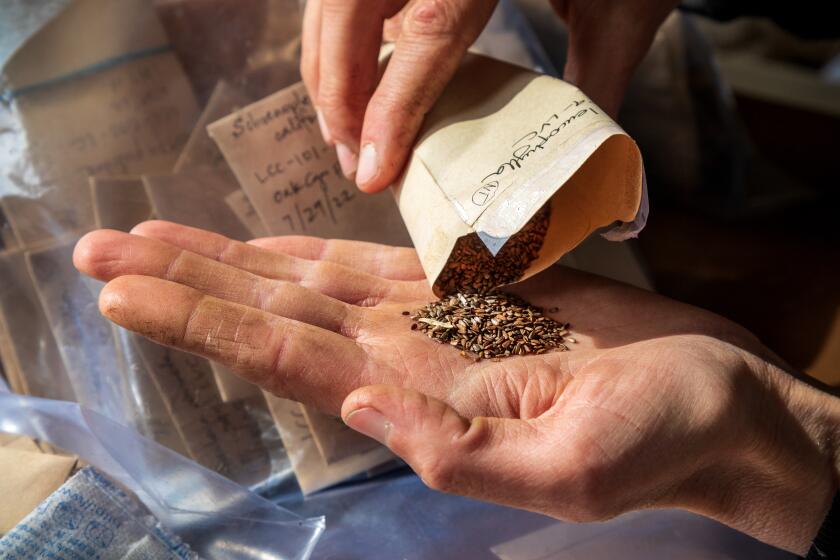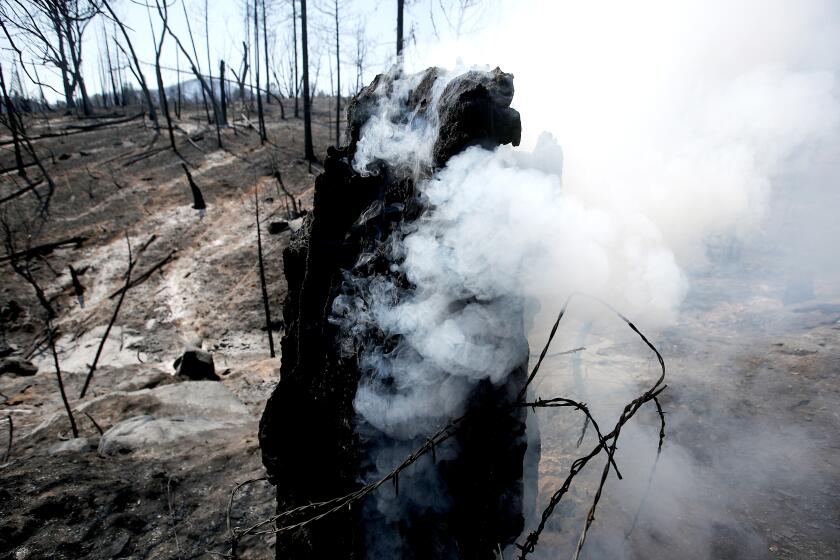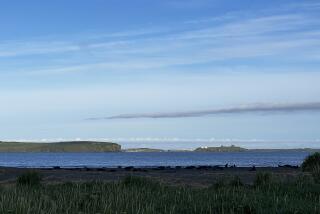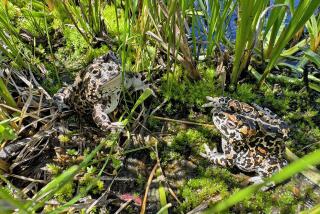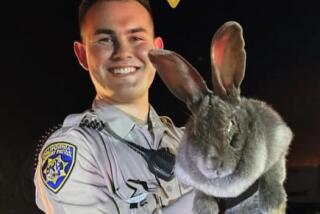What the elusive kangaroo rat can tell researchers about the health of the Santa Cruz Mountains
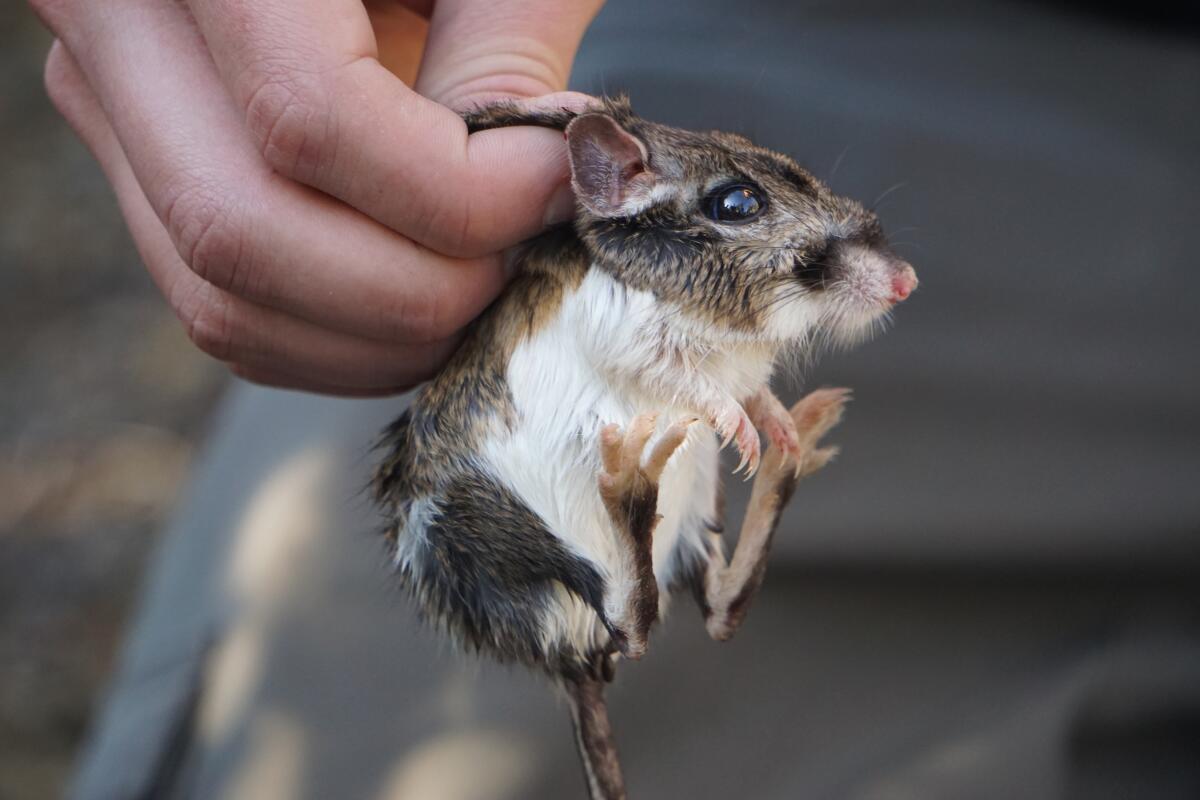
In 2019, cameras set up by wildlife photographer and researcher Ken Hickman in the Sierra Azul Open Space Preserve, a sprawling, 19,000-acre tract of wilderness in the Santa Cruz Mountains, captured images of a tiny creature with prominent black eyes, large back legs and a long tail — a Santa Cruz kangaroo rat.
For an animal that diminutive, the reaction to the photos from the scientific community was enormous, with researchers marveling at the discovery and launching new initiatives to map its habitat.
Matthew Sharp Chaney — a biologist with the Midpeninsula Regional Open Space District, or Midpen — called the discovery exciting and said it provides an opportunity to research a creature long thought to have disappeared from the region.
“Had we not preserved this massive area in Sierra Azul,” he said, “this area may have been developed; we may have lost the species.”
Conservationists rejoiced when California declared the San Bernardino kangaroo rat an endangered species. The celebration was short lived however.
The Santa Cruz kangaroo rat, which is more closely related to chipmunks and gophers than kangaroos or rats, had not been spotted in the area since the 1940s. The creature is listed as a critically imperiled subspecies by the California Department of Fish and Wildlife, and was believed to exist only in Henry Cowell Redwoods State Park in Felton.
Midpen and researchers at UC Santa Cruz, UC Davis and Cal Poly San Luis Obispo confirmed the presence of the kangaroo rat earlier this year, humanely trapping and releasing nearly a dozen of the animals — which bound around like kangaroos.
So why are scientists so thrilled to see the Santa Cruz kangaroo rat making its home again nearly a century later in this California preserve?
The creature — like larger and more recognizable animals such as mountain lions and otters — is a “keystone species,” meaning it has an outsize impact on its environment.
When complete, the 200-foot-long, 165-foot-wide bridge over the 101 Freeway in Agoura Hills will be the largest of its kind in the world.
The animals cache seeds in their underground burrows. Those seeds that aren’t eaten propagate into new shrubs and bushes such as Manzanita, contributing to the health of the chaparral and open space preserve.
The buried seeds are also protected when a fire moves through the area, allowing them to take root in the charred, but now nutrient-rich, soil.
“Where we have k-rats, we have healthier chaparral habitat,” Sharp Chaney said in an interview. “And that not only benefits the k-rats themselves but a number of other wildlife species that also rely on those plants and plant communities for food sources and shelter.”
But the future remains perilous. The open space where the species endures is shrinking.
The Wallis Annenberg Wildlife Crossing over the 101 freeway won’t open till late 2025, but the work of collecting native seeds and building a nursery to grow them has begun.
One of the reasons for that is the success of fire suppression efforts.
“For a long time, the state’s official sentiment was all fire was sort of bad,” said Ryan McCauley, a public affairs specialist with Midpen. “But I think that that understanding is evolving.”
Wildfires can play an important role in balancing an ecosystem, thinning groups of larger trees and allowing smaller plants to flourish, creating a diversity of habitat.
“What we like to see, on a landscape level,” Sharp Chaney said, “is a variety of habitats that support many different species and many different ecosystems.”
But with blazes being quickly snuffed out, forests of knobcone pines have encroached on the Sierra Azul preserve. Researchers also recently discovered a San Francisco dusky-footed woodrat in the area. As its name suggests, that animal is more commonly found in forested habitats.
Members of the Southern Sierra Miwuk Nation became the latest Indigenous tribe to watch homes burn despite knowing it could have been avoided.
That “tells us that the habitat is changing through time and becoming more of a woodland and less of an open chaparral community,” Sharp Chaney said, adding that “open Manzanita-dominated habitat ... is really disappearing pretty rapidly.”
The rediscovery of the kangaroo rat in the preserve is a reminder of the need for land preservation, he said. Ongoing research into the kangaroo rat, including population documentation and genetic testing, will help inform strategies for preserving the habitat to promote the health of the species.
More to Read
Sign up for Essential California
The most important California stories and recommendations in your inbox every morning.
You may occasionally receive promotional content from the Los Angeles Times.
